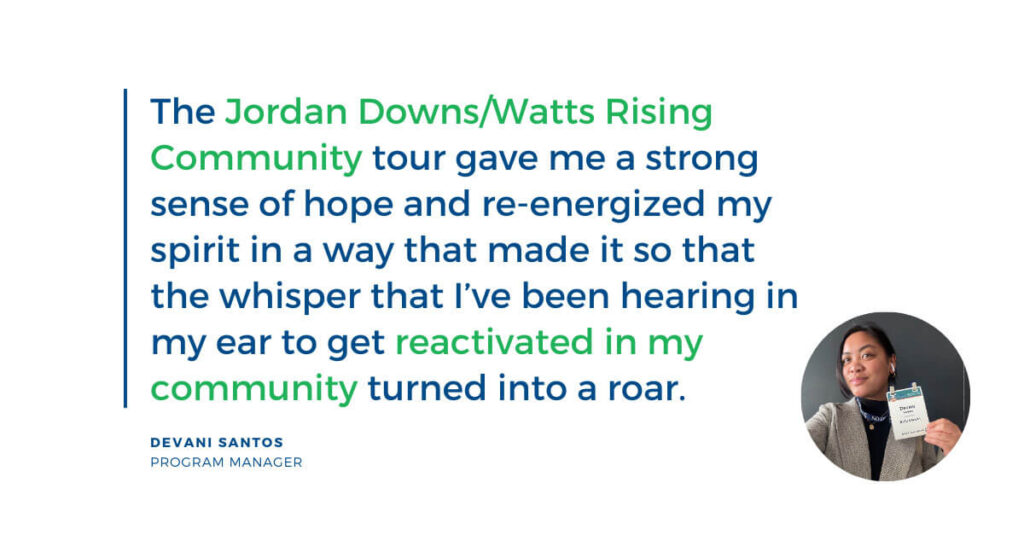Connecting with the Housing Community
We all want affordable, equitable, and safe communities in California, but transformation doesn’t happen in a bubble. Connecting with housing changemakers, forming partnerships, and sharing ideas is how we build regenerative communities that meet our needs.
Recently, some of our colleagues had the opportunity to gather with other housing changemakers to discuss challenges, opportunities, and lessons learned in the housing industry.
We wanted to share some insights our colleagues gathered from the three different conferences they attended, with the hope of providing new perspectives and ideas to generate a positive impact for the communities we serve.
Devani Santos
Changemaking happens when there are opportunities to convene and connect
It’s invaluable to have a supportive community of folks who are actively and intentionally looking to shift the narrative and structured processes in the housing system. There’s a need for more opportunities for people in different sectors throughout the housing ecosystem to learn about what one another does and to have intentionally designed spaces for them to collaborate.


Expand and diversify who’s at the table, including finance professionals and developers, to fully advance regenerative work
There’s a need for more developers and financial professionals who are looking to shift how they think and function in order to transform the housing ecosystem into something that feels more regenerative and equitable.
Affordable, equitable, AND safe housing is possible when community development is in service of environmental justice
Seeing a real affordable housing development in a BIPOC neighborhood where residents don’t sacrifice quality for affordability is inspiring. It can energize a community when we learn how to build community centered neighborhood revitalization efforts, and then get to experience what it looks and feels like when it comes to fruition.
Jeremy Masden
Our executive director, Jeremy Madsen, attended the CivicWell Policymakers Conference in Yosemite this March. He left the conference with many ideas, but what stood out was thinking about how to translate big picture, aspirational ideas to everyday work to make regenerative communities both feel and become possible.

Think aspirationally rather than just functionally.
There’s a tension between thinking aspirationally and functionally, but we want to get things done, while thinking big for our communities. We need to have a collective vision in place, so that when disaster strikes, the vision we’ve created in community can inform the response we take as a community. We can execute our vision while responding to disruption or disaster, rather than getting stuck in a cycle of fixing problems as they arise. An operational vision allows us to name and understand the big picture, while executing on the ground work.
Cerena Harrison
BIG understands regenerative community design and development is interconnected with people, place, and history. Cerena Harrison, our Program Director, went to Smart Growth America Equity Summit’s in March, and was left with two takeaways that center the importance of interconnectedness in regenerative design.


Honor the importance of the history of people and place
Visiting sites and talking with community members is important to execute true regenerative strategies and community planning. However, stepping into communities while recognizing the harm created from systemic planning equities, and engaging and supporting community members is necessary. Building equitable spaces requires honoring and respecting the people there. Supporting community needs requires understanding their unique situations and meeting people where they’re at.
Cultivate a consciousness of intention
There is importance of consciousness in the role of planning. When stepping into a community, ask yourself “Who am I designing this for? For what purpose and why?” Planners and officials need to question if community planning is coming from the community and serving their culture, rather than reacting to political and economic motivations.

